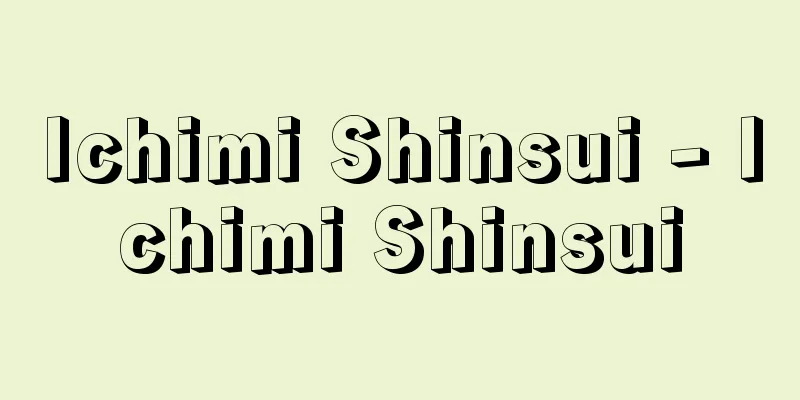Insect's coat - Mushi no tareginu

|
A long thin cloth draped over a hat, worn mainly by women during the Heian and Muromachi periods when traveling. The name "mushi" ("mushi") comes from the fact that the material used to make the tare-goromo was ramie (ramie), a superior material to hemp. Ramie has a nice feel to it, and was widely produced in Japan at the time as a raw material for textiles. Women wore it to hide their faces, and also to avoid dust and pests. (→Katsugi, Tsuboshozoku) Source: Encyclopaedia Britannica Concise Encyclopedia About Encyclopaedia Britannica Concise Encyclopedia Information |
|
平安~室町時代に主として女性が旅行の際などに用いた,笠のまわりに薄い布を長く垂らしたかぶりもの。虫という名がついたのは,垂衣の原料として大麻より上等のカラムシ (苧麻) が材料に用いられたことからきている。苧麻は感触がよく,当時織物の原料として国内で広く生産されていた。女性がこれを使う目的は,一つには顔を隠すことであり,またほこりや害虫を避けるためであった。 (→被衣〈かつぎ〉 , 壺装束 )
出典 ブリタニカ国際大百科事典 小項目事典ブリタニカ国際大百科事典 小項目事典について 情報 |
Recommend
Musical instrument manufacturing industry
Modern musical instrument manufacturing in Japan b...
Kasumigaseki Diplomacy - Kasumigaseki Gaiko
…When the Ministry of Foreign Affairs was founded...
Oreoica gutturalis (English spelling) Oreoicagutturalis
...Its beak is thick and short, and in English it...
Kagetsu (Kagetsu) - Crassula portulacea; baby jade; cauliflower ears
A succulent plant of the Crassulaceae family. It i...
Consilia
…Their main writing style was the commentaria, bu...
Barābar (English spelling)
A group of caves located 25km north of Gaya in Bih...
Regia (English spelling) Augusto Bernardino Leguía Salcedo
A president who sought to modernize and integrate...
Muffler
…In such cases, a silencer is a device installed ...
Fune no Ezaka
Year of birth: Unknown A man who served the Yamato...
Funktionspsychologie
In 1873, he became professor at the University of...
Henley Royal Regatta
… In 1829, the Oxford-Cambridge Boat Race began. ...
"The History of the British Industrial Revolution"
…In 1926, he became executive director and later ...
Toyono [town] - Toyono
A town in Toyono District, northern Osaka Prefectu...
Shuho [town] - Shuho
A former town in Mine County in the upper reaches ...
plaid
...The main types are the district checks made in...









